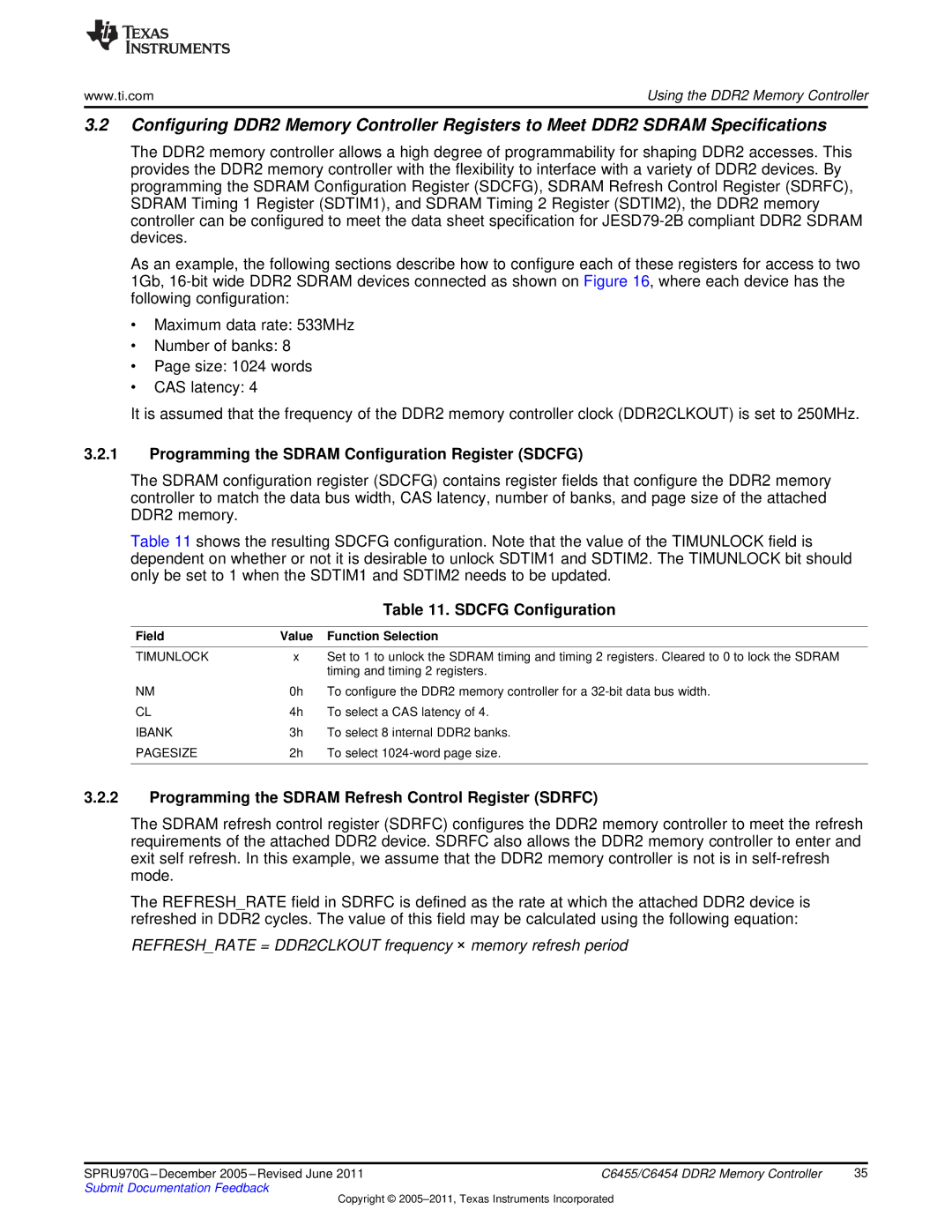
www.ti.com | Using the DDR2 Memory Controller |
3.2Configuring DDR2 Memory Controller Registers to Meet DDR2 SDRAM Specifications
The DDR2 memory controller allows a high degree of programmability for shaping DDR2 accesses. This provides the DDR2 memory controller with the flexibility to interface with a variety of DDR2 devices. By programming the SDRAM Configuration Register (SDCFG), SDRAM Refresh Control Register (SDRFC), SDRAM Timing 1 Register (SDTIM1), and SDRAM Timing 2 Register (SDTIM2), the DDR2 memory controller can be configured to meet the data sheet specification for
As an example, the following sections describe how to configure each of these registers for access to two 1Gb,
•Maximum data rate: 533MHz
•Number of banks: 8
•Page size: 1024 words
•CAS latency: 4
It is assumed that the frequency of the DDR2 memory controller clock (DDR2CLKOUT) is set to 250MHz.
3.2.1Programming the SDRAM Configuration Register (SDCFG)
The SDRAM configuration register (SDCFG) contains register fields that configure the DDR2 memory controller to match the data bus width, CAS latency, number of banks, and page size of the attached DDR2 memory.
Table 11 shows the resulting SDCFG configuration. Note that the value of the TIMUNLOCK field is dependent on whether or not it is desirable to unlock SDTIM1 and SDTIM2. The TIMUNLOCK bit should only be set to 1 when the SDTIM1 and SDTIM2 needs to be updated.
|
| Table 11. SDCFG Configuration |
|
|
|
Field | Value | Function Selection |
|
|
|
TIMUNLOCK | x | Set to 1 to unlock the SDRAM timing and timing 2 registers. Cleared to 0 to lock the SDRAM |
|
| timing and timing 2 registers. |
NM | 0h | To configure the DDR2 memory controller for a |
CL | 4h | To select a CAS latency of 4. |
IBANK | 3h | To select 8 internal DDR2 banks. |
PAGESIZE | 2h | To select |
|
|
|
3.2.2Programming the SDRAM Refresh Control Register (SDRFC)
The SDRAM refresh control register (SDRFC) configures the DDR2 memory controller to meet the refresh requirements of the attached DDR2 device. SDRFC also allows the DDR2 memory controller to enter and exit self refresh. In this example, we assume that the DDR2 memory controller is not is in
The REFRESH_RATE field in SDRFC is defined as the rate at which the attached DDR2 device is refreshed in DDR2 cycles. The value of this field may be calculated using the following equation:
REFRESH_RATE = DDR2CLKOUT frequency × memory refresh period
SPRU970G – December 2005 – Revised June 2011 | C6455/C6454 DDR2 Memory Controller | 35 |
Submit Documentation Feedback |
|
|
Copyright ©
